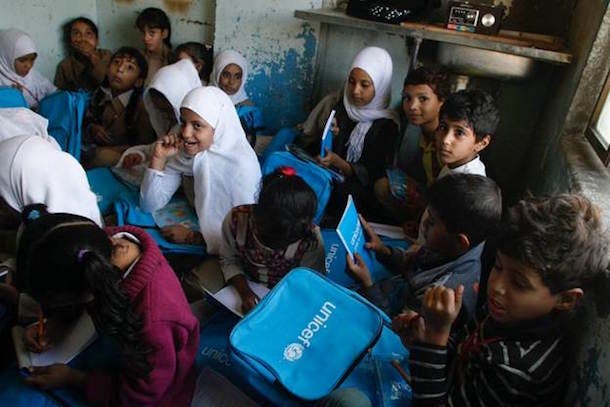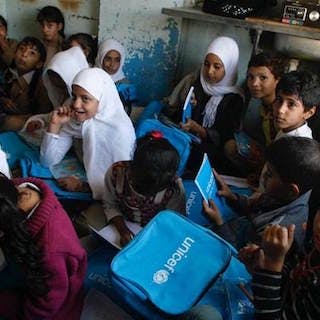
A year ago this month, conflict in Yemen escalated, and today more than 80% of the population – some 20 million people – are in need of humanitarian assistance. More than 2.4 million people have fled their homes, and more than 14 million are unable to meet their food needs.
The United Nations and humanitarian organizations are working to get aid to families in crisis in the country. Yesterday, a UN official spoke to the challenges facing people in Yemen. “It has been a terrible year for Yemen, during which a war peppered with airstrikes, shelling, and violence had raged on in the already very impoverished country,” Jamie McGoldrick, Humanitarian Coordinator in Yemen told journalists.
With crises happening around the world, sufficient resources to respond to the humanitarian needs in Yemen have not been provided. The UN has made an appeal for $1.8 billion for food, water, health care, shelter, and protection issues, but only 12% has been funded to date.
More must be done. Here are some of the ways the UN is helping families in crisis – and how you can support this work.
– The UN Office for Coordination of Humanitarian Affairs (OCHA) mobilizes resources and technical support to assist Yemenis in need. As a coordinating body, OCHA works closely with the Red Cross, Red Crescent Movement, UN agencies, and local non-governmental organizations. OCHA also provides funding to NGOs and partners on the ground working in hard-to-reach areas.
– The UN Children’s Fund (UNICEF) and partners provide for a number of resources for Yemeni children and their families, including access to clean water and sanitation, child and social protection, and education. UNICEF has vaccinated over 4.5 million Yemeni children under 5 for measles and polio in 2015, as well as provided nutritional care to over 4 million Yemeni children in 2015.
– The World Food Programme (WFP) has three main goals in its Yemen response: 1) To deliver food to people affected by conflict, malnourished children, pregnant women, and nursing mothers, 2) to provide emergency food assistance, and 3) to help the humanitarian aid community by transporting fuel into the country. Every month, WFP assists millions of people through in-kind food assistance.
– The UN Refugee Agency (UNHCR) works to safeguard displaced families who have fled violence. UNHCR and partners have delivered household items and emergency shelter, such as tents, mattresses, and blankets to more than 740,000 internally displaced people.
– The UN Population Fund (UNFPA) and partners are providing sexual and gender-based violence treatment and counseling services, hygiene kits, emergency obstetric care, ante-natal care, and other services. Yemen is an important area for UNFPA since 2.9 million women and girls are of reproductive age, with an estimated 500,000 pregnancies.
– The World Health Organization (WHO) works with partners to provide medical aid and supplies to Yemenis in need. WHO’s program areas in Yemen include emergency preparedness and humanitarian action, health systems development, reproductive health, and violence and injury prevention.
– The UN Development Programme (UNDP) is working with partners in Yemen to promote development, clear mines, restore basic services, and provide livelihood and job opportunities, among other efforts.
Photo credit: UNICEF

